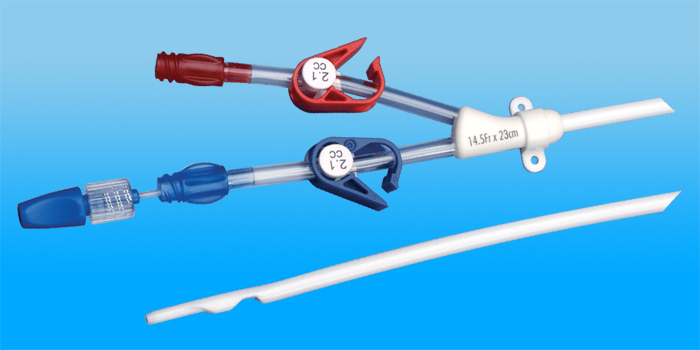Salem Vascular Surgeon
Hospital Address: |
Appointment Time: |
|
VH Speciality Hospital No.11, Dr NV Sundaram Gardens, Brindavan Road, Salem - 636004 |
Monday - Saturday Sunday - Holiday 9 AM - 7 PM |

Permcath
A permcath is a long, flexible tube that is inserted into a vein most commonly in the neck (internal jugular vein) and less commonly in the groin (femoral vein). This type of ventral venous catheter is tunneled under the skin for a few centimeters usually on the chest before it enter the neck vein. This is done when the catheter is going to be in place for long term (ie. greater than two weeks). If the catheter is not being left in long term than a Vascath can be placed which is a nontunneled central venous catheter that directly enters the neck or groin vein without having to be tunneled under the skin. The reason for the tunneling of the permcath is that it had been shown that catheters tat are tunneled under the skin before entering the vein have a lower risk of becoming infected or colonized by bacteria. This is partly accomplished by tunneling under the skin and because the permcath has a cuff, which is not visible and is in the tunnel under the skin allowing the subcutaneous tissue to grow into the cuff essentially creating a barrier for bacteria. This cuff once in place is also responsible for keeping the catheter stable so that it does not easily slide out as well as protecting it from infections.
These tunneled central venous catheter can be left in place for as long as one year and provides permanent access in patients. However despite being considered permanent the longer they are in place the greater the risk that they will eventually become infected. This is why most physicians will try to use these catheters as a bridge for finding other means of even more permanent dialysis such as an arteriovenous fistula or graft.
Permcaths although they appear to be one tube actually have two hollow bores. One part of the tube is responsible for carrying the blood to the dialysis machine and the other one carries it back from the machine to the body.
Copyright © 2025 - All Rights Reserved - Salem Vascular Surgeon | Designed & Developed By Dazz IT Wing